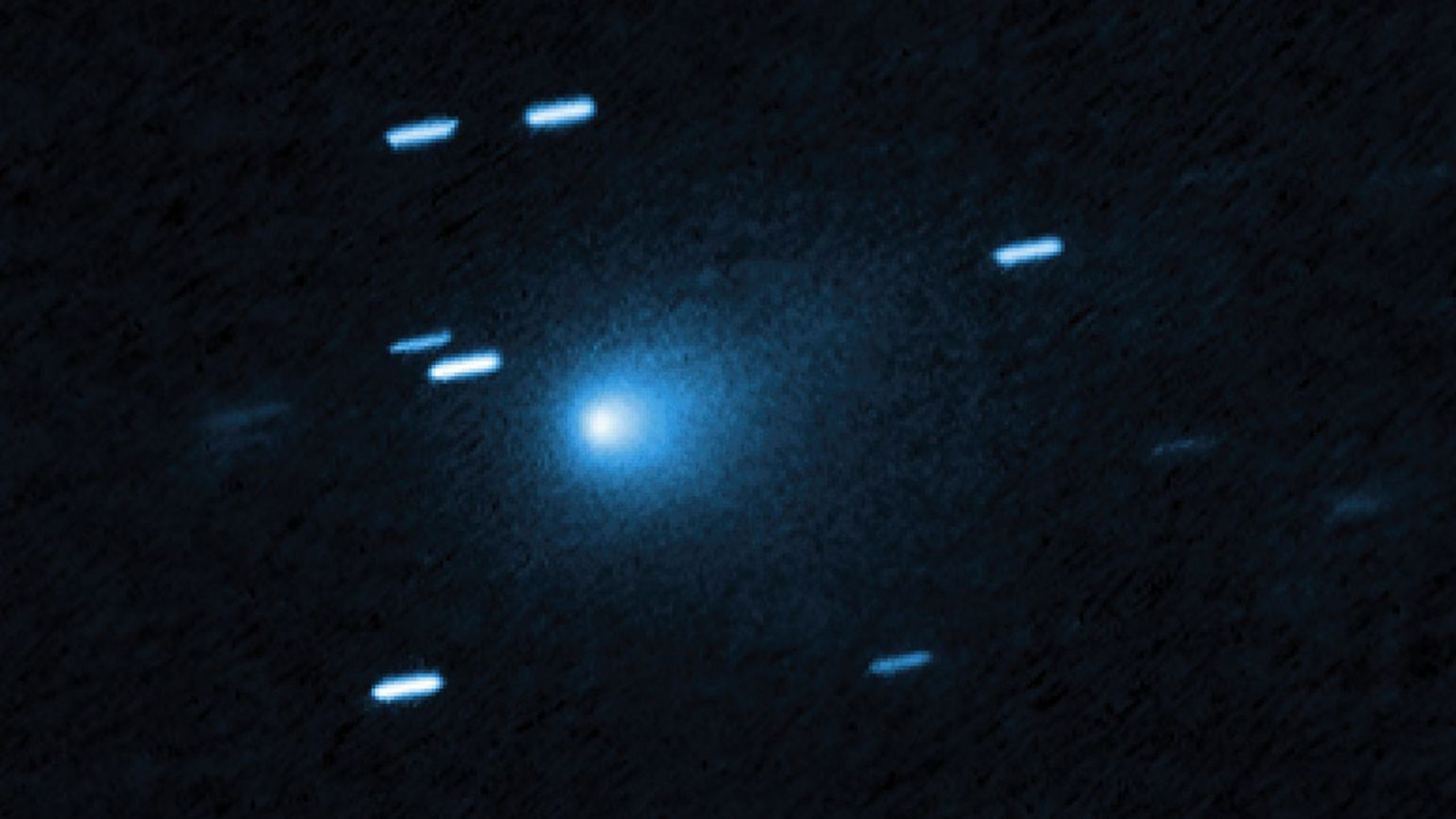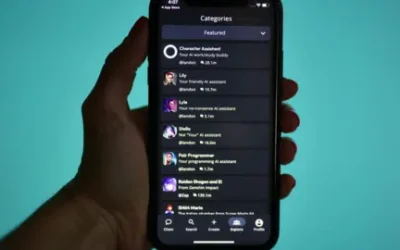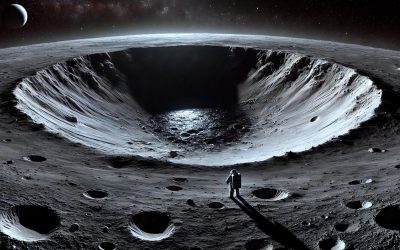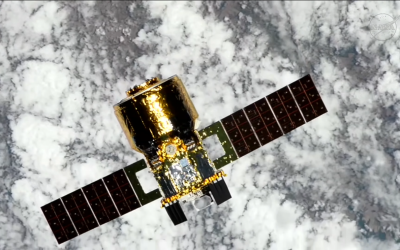The interstellar comet 3I/ATLAS is rapidly approaching perihelion, its nearest point to the sun, a critical juncture where it is predicted to exhibit its most intense activity. While the comet is presently obscured from Earth’s view, transiting directly behind our star, various spacecraft positioned across the solar system are maintaining an uninterrupted watch on the celestial visitor.
On October 30, the interstellar comet 3I/ATLAS is slated to reach its perihelion, marking the point in its orbit closest to the sun. This “interloper” from beyond our solar system will pass within 1.35 astronomical units (AU) of our star.
To put this into perspective, one astronomical unit is defined as the average distance between Earth and the sun, approximately 93 million miles (150 million kilometers). Therefore, during its closest approach, 3I/ATLAS will be approximately 125 million miles (202 million kilometers) from the sun.
**Understanding Perihelion: A Comet’s Fiery Transformation**
Perihelion marks the critical point in any orbiting object’s journey when it achieves its closest proximity to the Sun. While planets, with their relatively stable, near-circular paths, experience subtle variations, the impact of perihelion on comets—which traverse highly eccentric, elongated orbits—is profoundly dramatic.
As a comet plunges into the inner solar system and draws nearer to our star, the escalating warmth triggers a spectacular transformation. The frozen ices on its surface rapidly sublimate, turning directly into gas in a process known as outgassing. This expelling material forms a vast, diffuse cloud around the comet’s solid nucleus, called a coma, effectively creating a temporary atmosphere.
This intense solar interaction also typically gives rise to a comet’s most iconic features: two distinct tails. A dust tail, composed of microscopic particles released from the nucleus, trails behind, often curving gently. Simultaneously, an ion tail forms from charged gas particles that are stripped away by the powerful solar wind, pointing directly away from the Sun.
This surge in activity not only makes the comet significantly brighter and more readily observable from Earth, but it is precisely at perihelion that this dynamic outgassing is theoretically at its most vigorous, offering astronomers a peak window into these celestial wanderers.
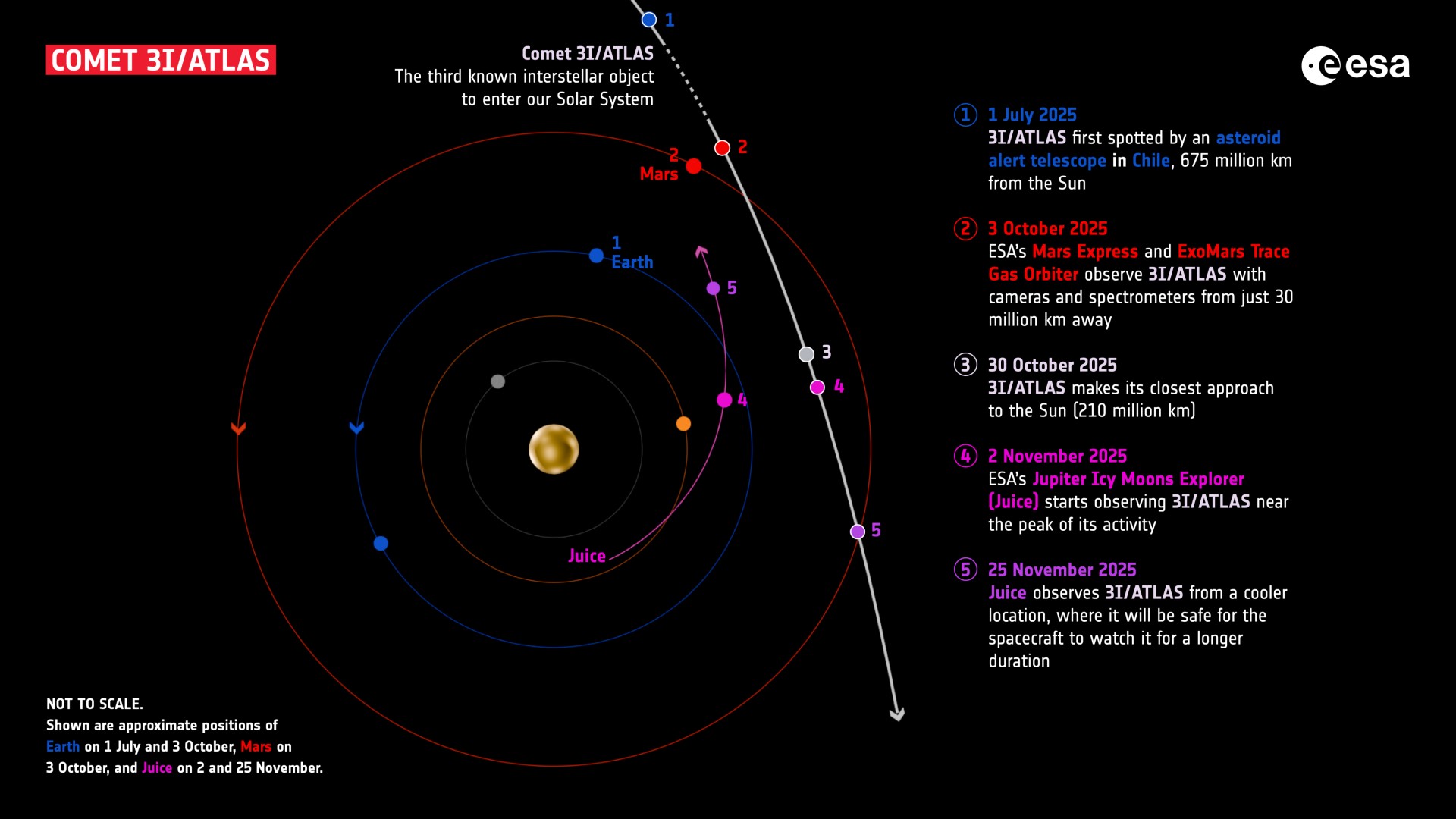
Hailing from beyond our star system, 3I/ATLAS is an interstellar object currently traversing the solar system rather than orbiting the sun. Despite its transient nature, its trajectory will bring it to a closest point to our star—known as perihelion—before it continues its journey back into the vastness of space.
Comet 3I/ATLAS has temporarily disappeared from astronomers’ sights, having moved into solar conjunction at the end of September. During this celestial event, the comet became lost in the sun’s overwhelming glare as it passed behind our star, making it invisible from Earth. Observers will have to wait until late November or early December for 3I/ATLAS to reappear in the morning sky. This unfortunate timing means that telescopes – whether based on Earth, orbiting our planet, or positioned at the L2 Lagrange point (a gravitationally stable location beyond Earth from the sun) – will miss the crucial opportunity to observe the comet during its perihelion, its closest point to the sun.
While direct observation from Earth presents challenges, a sophisticated fleet of spacecraft exploring our solar system offers significantly superior vantage points. For instance, the array of probes currently stationed at Mars provides an excellent perspective on the solar hemisphere that comet 3I/ATLAS is presently rounding. In fact, these Mars missions enjoyed a prime observation point during the comet’s closest approach to the Red Planet on October 3, when it passed within 0.19 AU (17.6 million miles, or 28.4 million kilometers).

Beyond ground-based observatories, a unique fleet of deep-space missions will also have the opportunity to observe comet 3I/ATLAS during its perihelion passage. These include NASA’s Psyche spacecraft, currently en route to its namesake metallic asteroid, and the Lucy mission, dedicated to exploring Jupiter’s enigmatic Trojan asteroids.
However, the European Space Agency’s Jupiter Icy Moons Explorer (JUICE) probe will achieve the closest vantage point. Currently on an extended journey to the Jovian system, having recently completed a significant Venus flyby, JUICE’s trajectory places it in the general direction of 3I/ATLAS, ensuring unparalleled proximity.
Despite this prime viewing position, a critical operational constraint will delay the sharing of JUICE’s findings. To safeguard its sensitive scientific instruments from intense solar radiation, the probe is presently utilizing its primary antenna as a protective sun-shield. This necessary measure means that any data collected from its observations of 3I/ATLAS cannot be transmitted back to Earth until February of next year.
Scientists are keenly focused on unraveling the chemical composition of comet 3I/ATLAS, particularly during its perihelion – its closest approach to the Sun. This critical period is when the comet’s intensified outgassing of gases and dust will provide the clearest insights into its elemental makeup.
Astronomers have already made intriguing discoveries, noting that 3I/ATLAS possesses an unexpectedly high concentration of carbon dioxide and a significantly greater abundance of nickel compared to ordinary comets found within our solar system. These distinctive chemical signatures offer an unprecedented window into the primordial molecular cloud that spawned both the comet and its distant home star system more than seven billion years ago. Such unique data enables researchers to draw direct comparisons between the chemical fingerprint of our solar system and the ancient birthplace of 3I/ATLAS.
As the comet nears perihelion, scientists anticipate the revelation of even more molecular components. A key question remains regarding iron: while observations to date have indicated a scarcity of this element, researchers will be watching closely to see if iron emission from the comet intensifies under the extreme conditions of its closest solar approach.
As Comet 3I/ATLAS is set to re-emerge from behind the sun in late November, observers anticipate its reappearance. While comets are known for their unpredictable nature, and 3I/ATLAS could still exhibit notable activity, its considerable distance from Earth suggests it will appear quite faint, with an estimated magnitude of 12. Consequently, viewing will be primarily limited to dedicated astro-imagers and users of smart telescopes. Powerful observatories, including the Hubble and James Webb Space Telescopes, will, however, be able to capture it with ease.

